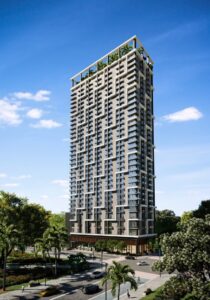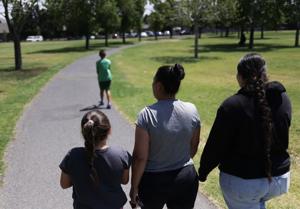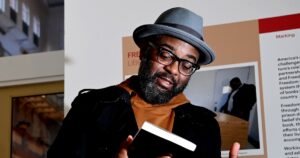Spectators gathered on the cobblestone streets of Madrid’s Chueca neighborhood this week to witness the lively and colorful spectacle of the “Carrera de Tacones,” or high-heel race. Held annually as a vibrant part of the city’s Pride celebrations, the event attracts competitors—primarily men in towering heels—who race down Calle de Pelayo, a tradition that has been cherished for decades. The atmosphere was electric on Thursday as participants, some struggling to maintain their balance, sprinted towards the finish line amidst cheers and gasps from the crowd.
The event, a cornerstone of Spain’s LGBTQ+ community, requires meticulous planning, especially as its popularity continues to soar. “There will be seven races in total, much more than in recent years,” explained David Bonillo, the event’s manager since 2014. Bonillo began his day early at LL Bar, the iconic drag venue that initiated the competition in the late 1990s. “Six qualification races at 6pm. Then, the winners will face-off in the grand finale.”
Rules and Regulations
The Carrera de Tacones is governed by strict rules to ensure fairness and safety. In a nearby sportswear shop, participants check in and have their shoes inspected. Staff members tape competitors’ shoes to their ankles with black duct tape to minimize the risk of injuries. Another staffer measures the heels, disqualifying any footwear under 10 cm (about four inches) in height.
“I’m sorry, but you’re not going to be able to race,” a staff member informed Edson Escolar, a hopeful participant from Guatemala, whose heels were found to be two centimeters too short. Escolar, who had traveled specifically for the event, expressed his disappointment but also his sense of freedom in Madrid. “In Guatemala, we have Pride but it’s nothing like this. People there still look at you funny if you wear feminine clothes. Here, I feel so free.”
A Growing Tradition
Few people know more about the race’s origins than Chumina Power, a renowned drag queen and entertainer in Chueca. Power, who has been involved since the event’s inception, provided commentary and entertainment from a platform near the finish line. “The high heel race has been going on for 30 years, but at first, it was a tiny event with just a few people,” she recalled. “Pride itself was also small. The first celebrations in this country took place across only two small streets here, and Calle de Pelayo was one of them.”
Madrid Pride, known as “Orgullo Gay de Madrid,” began as a political demonstration in 1978. By 2019, it had grown into Europe’s largest Pride celebration, attracting around two million visitors annually. The high-heel race has evolved alongside it, becoming a beloved fixture of the festivities.
Race Day Excitement
As the final race approached, the tension and excitement were palpable. Crowds pressed closer to the makeshift track, eager to witness the spectacle. Competitors ranged from seasoned veterans to nervous newcomers. Brian Healy, an Irish expatriate, shared his enthusiasm for the event. “I’ve competed every year since 2018 and I love it,” he said, recounting his experience with humor and camaraderie.
For others, like first-time racer Pablo Lopez, the challenge was daunting. “I’m really scared,” Lopez admitted, having practiced at home but finding the cobblestones a different beast. As the final race commenced, another challenge emerged: shoe fatigue. One finalist displayed bloodied toes and a shredded shoe, a testament to the race’s demanding nature.
The climax of the event included a surprise twist: finalists had to don long dresses, wigs, and carry handbags filled with bricks to the finish line. The race concluded with a thrilling photo finish, as Raul Prieto from Bilbao claimed victory by a mere second. “This was so much fun, and I’m so pleased to have won it,” Prieto said, clutching his €350 prize. “I want to run this race every year for the rest of time!”
The Carrera de Tacones continues to be a symbol of joy, resilience, and community spirit, embodying the essence of Madrid Pride. As the event grows, it remains a cherished tradition, celebrating diversity and inclusivity in the heart of Spain’s capital.






